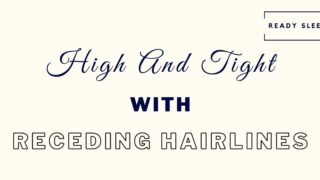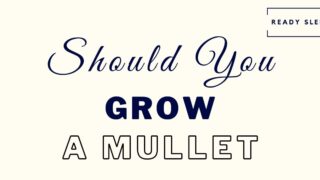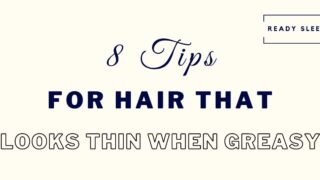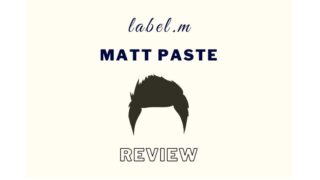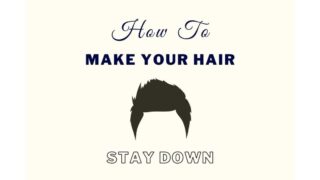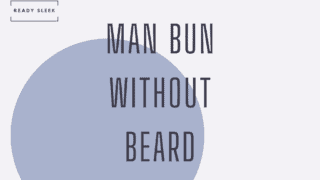There aren’t many styling products out there as universally loved as hair clay is. It’s versatile, easy to use, and isn’t going out of style any time soon.
You’re about to learn everything you need to know about it.
The main reason some men shy away from hair clay is a poor technique when it comes to using it. Having said that, it does also suit certain hair types more than others.
I’ll be going through what hair clay really does, who it’s best for, how to use it, and so much more.
Let’s get to it.
What Is Hair Clay?
Hair clay is a dense and gritty styling product that usually contains real clay minerals such as bentonite or kaolin. Most clays produce a medium-to-heavy hold and a low shine or matte finish.
So, what’s it used for?
Its ability to produce a very layered and high-volume appearance, as well as its low shine finish, has made hair clay a go-to product for modern textured hairstyles.
But it’s also capable of creating tidier and neater hairstyles such as more relaxed and less glossy pompadours or side-swept styles.
In this way it’s really versatile, allowing you to achieve many different styles depending purely on your styling technique.
It’s more versatile than pomades and gels, for instance, which restrict you to slicker and shinier styles.
Hair Clay: Most Common Ingredients
Hair clay will contain clay minerals such as bentonite or kaolin. It will also often contain waxy compounds such as beeswax, petroleum, or paraffin.
Hair clay can be predominantly water-based, or predominantly oil-based. As you’d expect this will impact how easy the clay is to wash out.
But the one thing that all true hair clays will have in common is that they’ll contain a clay mineral of some sort.
What Does Hair Clay Look Like?
Clay looks light, airy, and relaxed when applied to the hair. When used in moderation, it produces a very natural-looking finish while still providing an effective hold.
Here’s what hair clay looks like right out of the jar. As you can see, it’s thick and gritty, but when properly emulsified (broken down) it should definitely be smooth enough to apply comfortably.
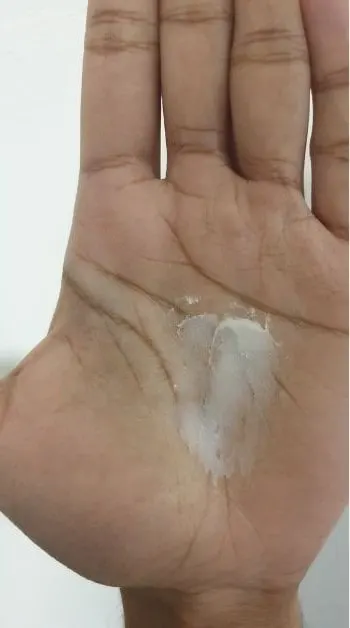
3 Key Benefits Of Hair Clay
The main benefits of hair clay include its heavy and pliable hold, matte finish, and ability to make the hair look fuller and plumper.
1. Pliable And Heavy Hold
Clay is a pretty dense and heavy substance. This strength will allow you to keep even thicker and more resistant hair in place.
Its hold is good. Although some clays will provide a better hold than others, in general, you can expect at least a medium hold from one.
But it’s not just the strength.
I mean, water-based pomades and gels give you great hold. But they dry stiff – a lot of men dislike this.
Clays, on the other hand, give you a great hold that’s also pliable. This means you can still move it around even once it’s set – great for restyling throughout the day.
A pliable and heavy hold is pretty rare. Clays definitely have this going for them.
2. Plumping Effect
Clay minerals like kaolin and bentonite absorb water and make the hair look thicker and fuller than it otherwise would.
This “plumping” effect is also appealing to a lot of men. It’s easy to achieve volume and fullness if this is what you want.
Combining it with a thickening pre-styler exaggerates this effect.
3. Matte Finish
A “matte” finish technically means no shine. But it’s pretty rare for a hair product to be truly matte.
Clays come closer than most, however. At most, you’d get a low shine or natural finish with clay.
Considering low shine finishes go hand-in-hand with so many modern, textured styles, it’s no surprise that clays are more popular than they’ve ever been.
Hair Clay And Hair Types
No matter how versatile a styling product may be, it’ll most likely suit certain hair types more than others.
Clay can pretty much be used on any hair type, but it’s worth discussing what it can do for them separately.
Thin Vs Thick Hair
Clay works very well for men with thin or fine hair because its absorbent properties and matte finish make it look thicker and fuller.
Compare this with shinier products such as pomades, gels, and waxes that may risk revealing too much of the scalp in men with thinner hair.
Although clays are understandably popular with thin-haired men, they’re just as popular with thick-haired men too.
This is because they’re drawn toward its heavy hold. The thicker the hair, the stronger the hold needed. Clays are able to provide this.
Long Vs Short Hair
Clay often gives long hair the heavy hold it needs to keep it in place.
Similar to how it does for thicker hair types as well.
But men with short hair are also drawn to its matte or low shine finish. When you’ve got short hair, shinier products like pomades may show too much scalp – just like they would with thin hair.
You’re probably getting a good feel for just how versatile clay is by now.
Thick, thin, long, short – its popularity is widespread.
Straight Vs Curly Hair
Hair clay works well on both straight and curly hair.
It’s one of those products where you can focus less on your hair type and straightness and more on what you want it to do.
If you’re looking for low shine and a pliable and relatively strong hold, go for clay.
Some men with curly hair prefer to add gloss and definition to their curls. They may want something that would tame the curls and perhaps even reduce frizz.
Clay may not be ideal in this case.
If you’d rather have a slicker, glossier, more defined look or just want more shine, go for a pomade, wax, or gel.
How To Use Hair Clay In 6 Steps
Here’s a routine you can use for applying hair clay in the most effective way possible. I’ll be going through how you can use it to create a more textured and tousled look (more popular with clays), as well as a neater and more defined look.
The product I’ll be using is a personal favorite – Hanz De Fuko Claymation (Amazon Link).
1. Wash And Dry
Given the fact that clay’s a pretty heavy and dense substance, it’ll be much easier to apply it to clean hair.
Grease, oil, dirt – it’ll all just weigh the hair down further and prevent you from getting a good hold and achieving good volume.
Wash it with or without shampoo.
You can choose to towel-dry it until it’s slightly damp or dry it completely with a blow-dryer.
Applying clay to damp hair will allow you to distribute it through the hair easier, but will also lead to less of a matte finish.
2. Pre-Style If You Want To
If you’re going to apply a pre-styling product before applying the clay, now would be the time to do it. It isn’t essential, but it does make a difference, particularly if you’ve got longer hair.
Apply it to damp hair, before you blow-dry.
Pre-stylers can take many different forms. But what they essentially all aim to do is make the hair more responsive and easier to style in some way.
Some of them thicken, some of them smoothen, and some of them even add frizz. It really depends on what you’re looking to do.
For example, I use a thickening tonic because my hair is pretty thin. It makes the end result look fuller and makes it easier to build volume.
Once you’ve applied the pre-styler, start working the hair in the direction you’ll eventually want it to lie.
You could do this with a brush, comb, or your fingers. Using a blow-dryer at this point (after the pre-styler is applied) would be a great way to build volume.
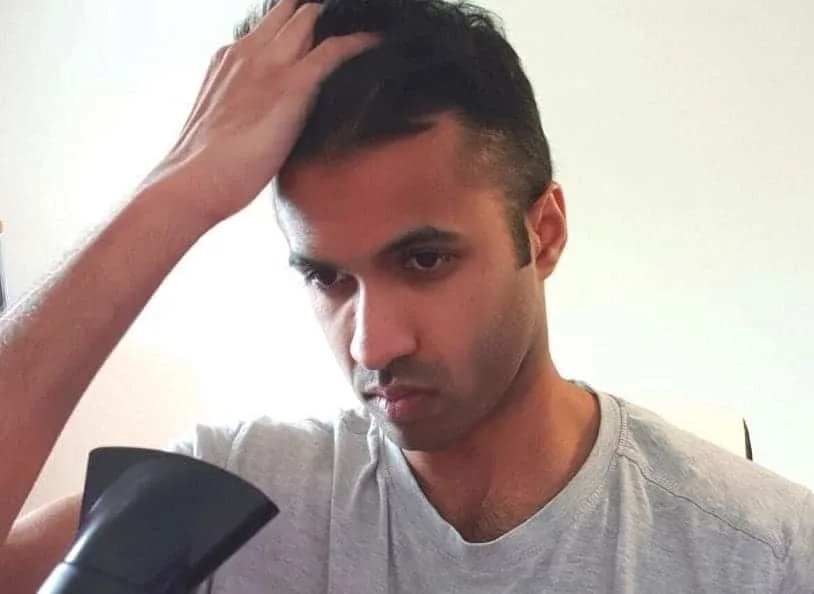
If you want to define the side part, you can use the blow-dryer to start doing that now. Point the nozzle at the side part, flattening the hair on either side of it and making it look more pronounced.
3. Break The Clay Down
Although this may sound obvious, I’ve made it a separate point because it’s very important when it comes to clay.
Clay is pretty dry and gritty and can be difficult to work through the hair if it isn’t broken down (emulsified) properly first.
In fact, tough distribution is one of the main reasons men give for getting turned off clay.
Start with a dime-sized amount. A small amount of clay really does go a long way.
Start low and go slow. If you need more you can always apply more when you fine-tune a little later on.
Rub the clay in between your palms until it’s warm. Break down any grit, bits, or clumps. All you should be left with on your palms is a mild shine.
4. Apply From Root-To-Tip
The key to getting a good hold from clay is an even distribution. You don’t want to just apply it to the tips of the hair strands.
Really work the clay into the roots. Focus on the top but do apply a small amount to the sides and back as well, just to flatten any flyaways you may see.
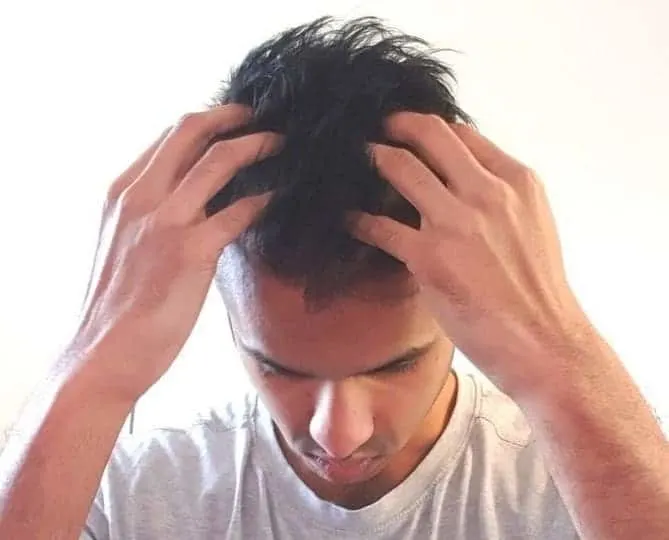
During this “first application”, work the hair in all directions – forward, backward, and sideways. This is important for distributing it evenly.
This is before you do any styling. That comes next.
5. Style The Hair
At this point, the clay has been spread through the hair evenly. It should be responsive and ready for styling.
You’ll need to decide whether you want a messy, tousled, and textured look (more popular with clay), or a neater and more defined look.
Messy And Textured:
A “textured” style is one where the hair has a layered and separated appearance. You’ll usually want to focus on trying to build volume and getting a light and airy look.
Clays are great for this.
It’s a lot easier to achieve a textured look using only your fingers. Start tousling and finger-combing the hair in your direction of choice.
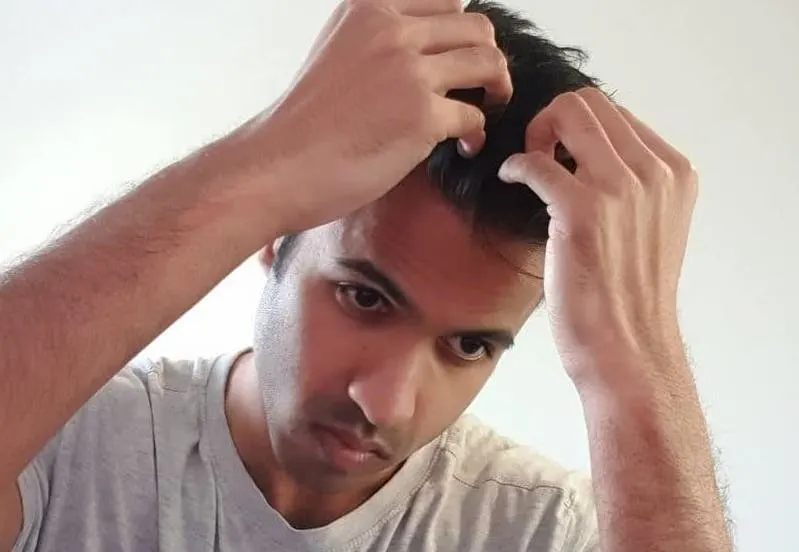
The more you do this, the more volume and texture you’ll build. Use a blow-dryer while doing it if you want to build volume.
Don’t be afraid to experiment or to leave it looking loose. Clays are great for those casual, everyday appearances. Side-swept styles, tousled quiffs, and so on.
Neat And Defined:
Clays aren’t as popular as pomades and waxes are for tidier and more formal styles.
But you can still achieve them – remember, clay is versatile.
Instead of using your fingers, you’ll want to use either a comb or a brush to sweep the hair in your direction of choice.
The lines you get when styling using a brush or comb are what gives the hair that more formal appearance. You’re focusing less on texture and more on definition.
You’ll want to pay more attention to flattening out strays and flyaways.
You can still use a blow-dryer while styling. In fact, it’ll help you build volume and won’t necessarily make it look less neat.
6. Define That Side Part
You may have already started doing this while blow-drying in step 2.
But once you’ve finished most of the styling, it would be time to really hone in on defining that side part if this is something you want to do.
You may not want to and that’s absolutely fine.
But defining the side part is a great way to make a messy and textured hairstyle not look too messy.
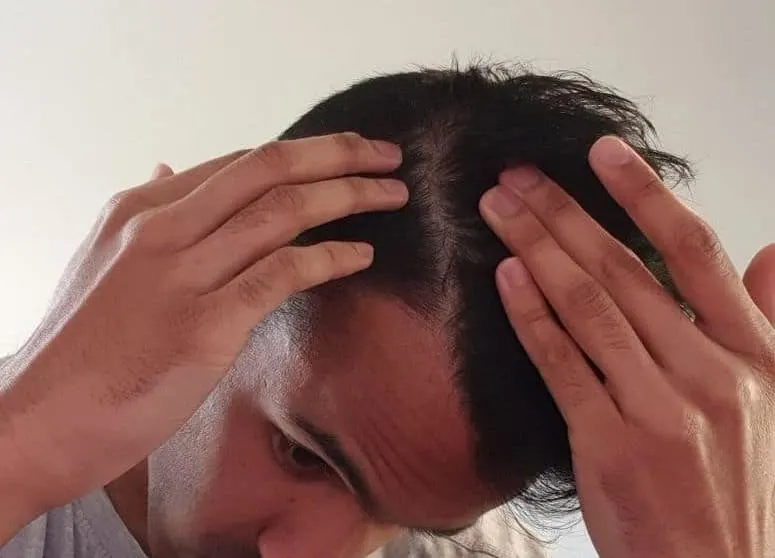
It’ll ensure that the style looks more intentional and less like a bedhead.
So, find your side part. Using a comb can be helpful here.
Once you’ve found it, flatten the hairs on either side of it to really make it look obvious. You can use a small amount of clay to do this if you’d like to.
At this point, use whatever clay you’ve got left on your hands to flatten any flyaways and strays you’ve got on the sides and back.
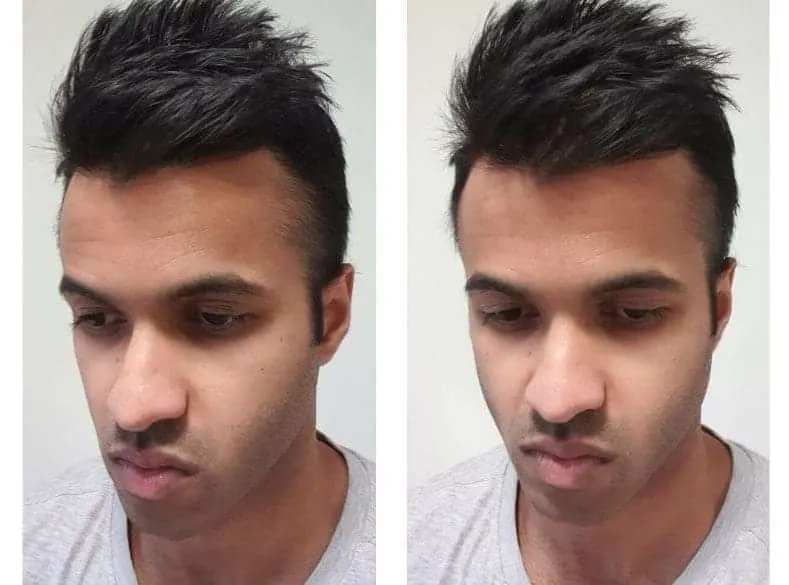
You’re done.
How To Wash Out And Remove Hair Clay
Most hair clays will wash out easily simply by rinsing with water. Oil-based clays may require a shampoo rinse, however. In the rare instances where oil-based clays are resistant to shampoo, a deep degreasing conditioner can be tried instead.
Essentially, these are your three main options:
- Water only – This is possible with water-based clays, as they’re completely water-soluble.
- Regular shampoo – This should do the trick for the vast majority of oil-based clays.
- Deep Conditioner – It isn’t usually necessary. But if you’re really struggling to get a proper clean with a regular shampoo, you could try a deep conditioner like Aussie 3-Minute Miracle Moist (Amazon Link). Be sure to leave it on for 5 minutes or so before washing it out.
Frequently Asked Questions
Let’s wrap things up by answering some frequently asked questions on hair clay that are rarely answered online.
Is Hair Clay Good Or Bad For Your Hair?
Hair clays often have hydrating and moisturizing ingredients that could be said to be good for the hair. However, given the additional chemicals that are often added to almost all hair products, using hair clay excessively could be bad for the hair or dry it out too much.
Can You Bring Hair Clay On A Plane?
Hair clay can be taken on a plane in your hand luggage as long as it’s under the TSA limit of 3.4oz (100ml). Any more than that and it will need to be put into your checked baggage.
As strange as it may sound, hair clay would, in fact, fall into the category of “liquids and gels” and does still need to be below the limit.
Although this magical 3.4oz figure will be true for the vast majority of airlines, it’s worth checking with the specific one you’re flying on before setting off.
Can You Use Hair Clay Every Day?
Hair clay can be used every day considering it’s generally quite easy to wash out, regardless of whether it’s water-based or oil-based.
Unlike oil-based pomades and waxes, you won’t get much build up over time. You’ll probably find that you’ll need to apply more clay every time you want to style it.
Use the lowest amount necessary to achieve your desired styling effect.
Remember, any hair product used in excess can do damage over time.
Can You Use Hair Clay On Your Beard?
Avoid using hair clay on your beard. It’s generally too heavy, gritty, and thick for beard hair and its ingredients won’t necessarily be as kind to the facial skin underneath.
Plus, you really don’t need that strong of a hold when it comes to beard hair.
There are plenty of styling products out there designed with beard hair and facial skin in mind.
You’ve got beard balms and butters – generally more moisturizing but still give you a reasonable hold.
Beard waxes can be used if you’re going for more complex beard styles and want a stronger hold.
But no, avoid using hair clays on your beard whenever possible.
Can You Sleep With Hair Clay In?
It’s generally best to avoid sleeping with hair clay in, particularly oil-based ones that can rub off on your pillow and get onto the skin.
Even if it’s just a simple rinse with water, doing so before bed is a good habit to get into. The less product you’ve got in your hair when you sleep, the more comfortable it’ll usually feel as well.
Unlike pomades, for instance, clays are so easy to apply and wash out that rinsing before bed really isn’t that big of a deal.
It won’t take you long to get that stuff back in the next day.
Does Hair Clay Expire?
Hair clays do expire and go bad, even if they don’t have a specific expiration date listed on the packaging.
It’s difficult to know when exactly it expires, but if it’s left in a cool and dark storage area, you can pretty safely say its shelf life is longer than a year.
But don’t use that as a hard-and-fast rule. If the scent goes off or it just feels too firm or strange, don’t use it.
How Long Does Hair Clay Last?
You can expect a standard 2oz container of hair clay to last between 2-3 months with daily use.
Of course, this will also depend on the type and length of your hair. You’ll need to use more clay to get the same hold and effect on thicker and longer hair.
But in general, 2-3 months is a pretty safe bet.
Should You Use Hair Clay On Wet Or Dry Hair?
Use hair clay on damp hair if you want an easier distribution and less of a matte finish. Use it on dry hair if you want more of a matte finish. Avoid using clay on wet hair as the weight of the water will make it difficult to style.
What If Hair Clay Is Too Hard?
If hair clay is too hard, creams, pastes, and putties are good softer alternatives if you still want a low shine finish and a reasonably good hold.
It’s true that hair clay can be tough to break down and work into the hair – but you really do get used to it.
Once it’s broken down properly, it shouldn’t be that hard to distribute.
Having said that, if the clay has suddenly turned unusually firm or hard, make sure it hasn’t expired.
Conclusion
Hair clay isn’t going anywhere anytime soon. It’s way too popular at the moment.
It’s so versatile that you can pretty much use it for anything other than glossy and shiny finishes.
This versatility means that it’s all down to your knowledge and technique when it comes to using it. When you’ve got that, you can really make it do pretty much anything you want it to.
Hopefully, this article has taken you a step closer to achieving that.
Enjoy.
Ready Sleek founder. Obsessed with casual style and the minimalist approach to building a highly functional wardrobe. Also a fan of classic, vintage hairstyles.

![Hair Clay: The Complete Men’s Styling Guide [2021]](https://www.readysleek.com/wp-content/uploads/2021/02/Hair-Clay-The-Complete-Mens-Styling-Guide-Feature-Image-720x405.jpg)
